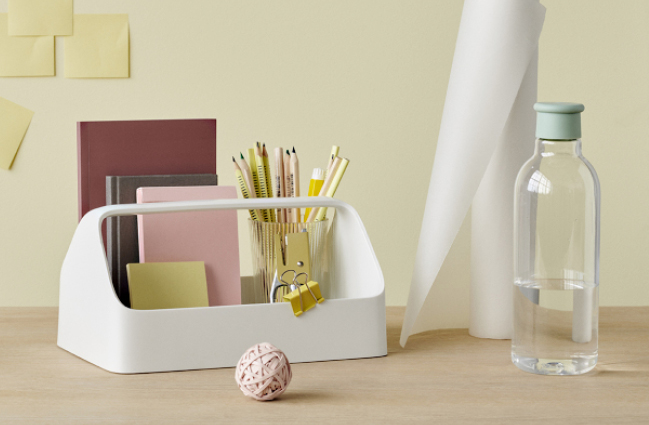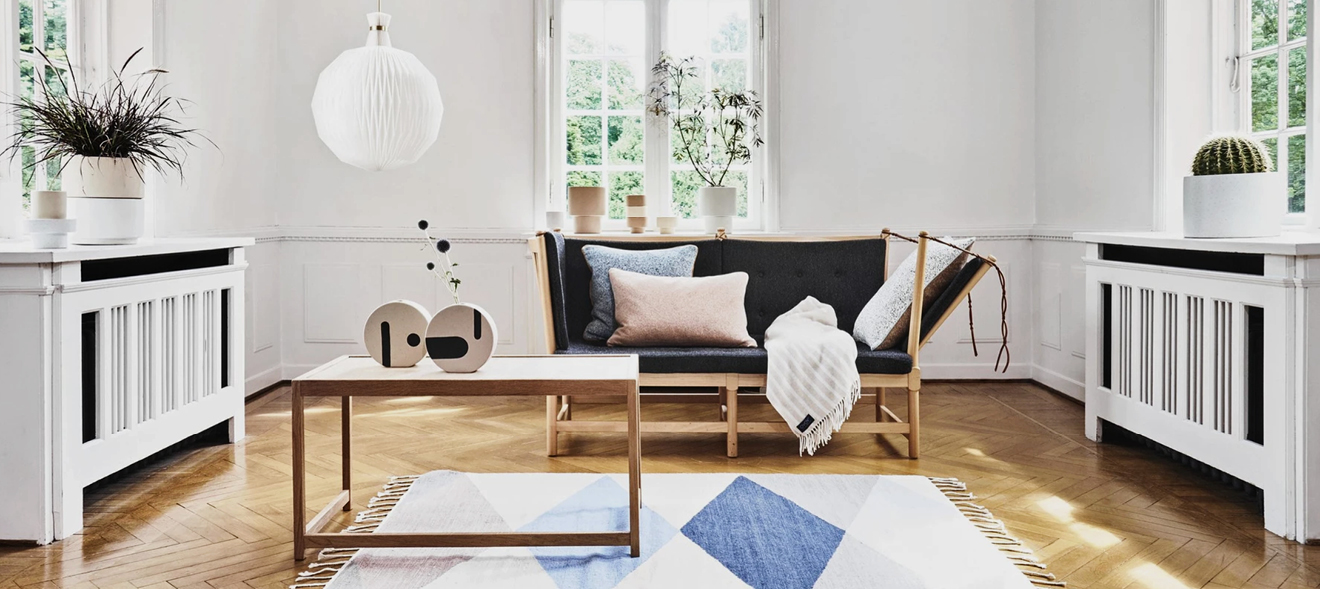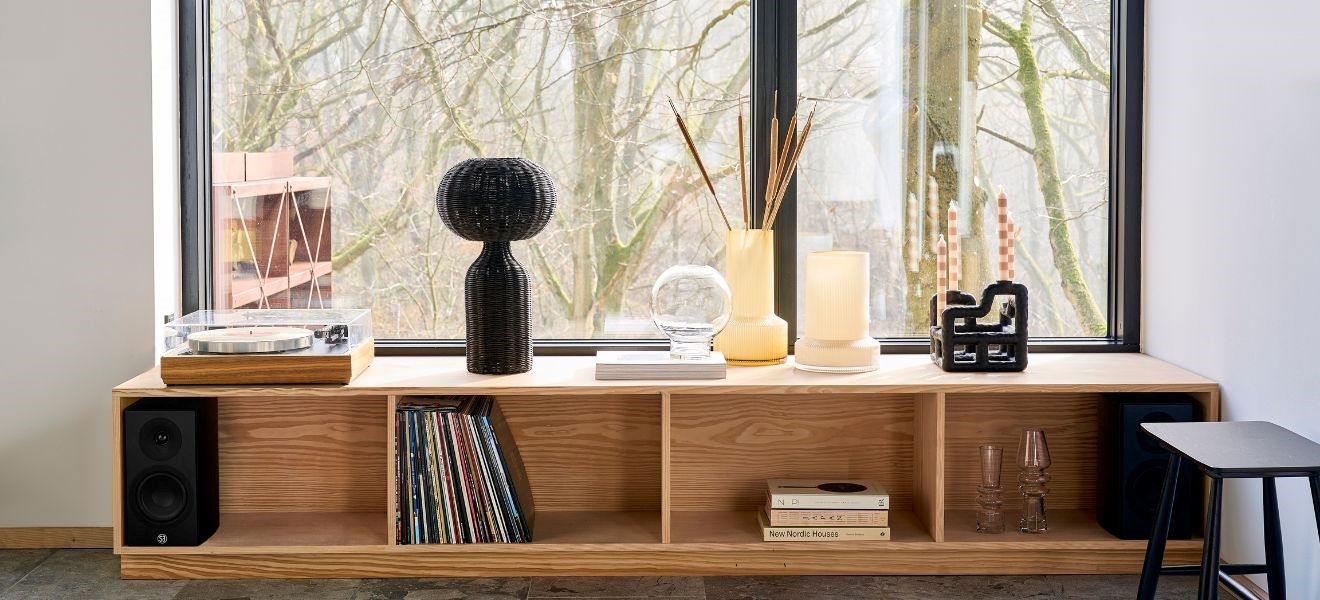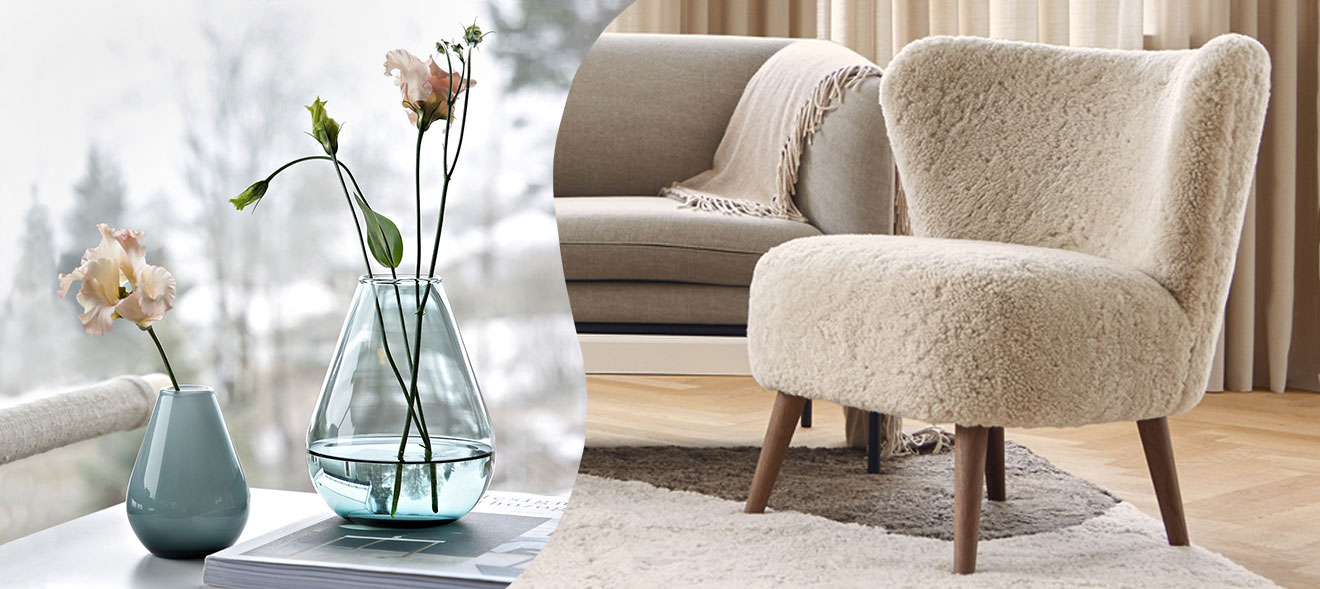Dr Barbara Perfahl is a room psychologist, author and home stager – and therefore an expert in furnishing and designing homes. She does not restrict herself, though, solely to issues of interior design: “I deal with the question of how rooms work,” explains Dr Perfahl. We talked to the Austrian-born psychologist about combining home life and work at the current time – and about how to create a successful feel-good home for both situations. Perhaps the home office is a sort of litmus test: Now more than ever, it is becoming increasingly clear how people want to live – and what they really need.
Dr Perfahl, as a room psychologist, you look at how spaces work. In terms of furnishings, what can I do to make myself feel good at home, particularly in times such as these?
“Precisely because we are spending so much time at home, things that have always irritated us are now particularly visible. One basic thing I notice in many homes is that there is far too much to see. We often live in environments with a degree of sensory overload. Many people are now starting to have a clear out and declutter. But you don’t necessarily have to get rid of things permanently. One immediate thing people can do to help is to create more empty spaces – both on surfaces and walls. It’s always better to group things together and have a bit of empty space in between. People feel most comfortable when the level of stimulation is kept within bounds. In this way we can also reduce the feeling of confinement that now affects many of us: When in doubt, put things away in the cupboard.”
Stylish storage: The High Box from HEY SIGN makes bulky things disappear. Verso Design offers a whole range of storage solutions that are as simple as they are versatile. The multifunctional Linn clothes rack is easy to assemble and offers additional storage space for clothes, shoes and boxes in almost any corner of the home.



What about the opposite case? Minimalists who aren’t used to spending the entire day within their own four walls may experience a sense of visual boredom more quickly than they would do otherwise.
“True. There are of course people who already live in an extremely low-stimulus environment. In the present situation, they may suddenly feel that things are just too cool, too uncomfortable for them. Soft materials, warmth, structure, i.e. pleasantly tactile surfaces, can help here. Anything that’s a bit cuddly rather than being smooth and shiny – cushions, candles, room fragrances etc.
I always advise people to listen to their feelings. To take time and check out their inner space. This goes beyond the question of mere decoration. Especially in such difficult times, it is extremely important for us to do something for ourselves. None of us know how long the current situation will last. No one has ever spent such a long period of time at home. The only way to manage this effectively is to create a space for our own well-being – more than we usually do in our everyday lives. And our homes are a more important element than ever in this.”
It is easy to overdose on ‘hygge’: However, used sparingly, throws, rugs, cushions etc. are still the most reliable means of bringing a little more cosiness, even to minimalist homes.




Of course, Dr Perfahl adds, it is still important to get as much fresh air as possible. People who have a balcony or terrace are especially lucky these days: They add a permanently available outdoor area to the individual living space. The above advice can, of course, also be applied to this living area: Clear away any visual disturbances and turn empty balconies into an open-air feel-good space with outdoor furniture and accessories. But feeling good at home is, of course, not just about our leisure time these days.


Many people now have to spend not only their everyday life at home, but also their working hours. How can I create the necessary separation here – especially if I don’t have my own study?
“If at all possible: create zones. Don’t just end up working at the dining table. No matter how small it is, a separate work area can be a great help! With your own rug and special lighting you can create these sorts of islands within a room. Of course, improvisation is also required: You can position a houseplant so that it becomes a room divider. Or position a bookshelf at rightangles to the wall.”

“Also: If it is at all possible, set up a small work table. Nowadays, when most people work just with their laptops, a very small desk is usually enough – if you don’t have one, you can have it delivered. It’s best positioned in front of a window or in a window alcove, because, according to research, people work in a more effective and concentrated manner if they have a view to the outside. Getting the right bits of equipment now will pay off.”
A small desk can be worth its weight in gold at this time. And if two of you have to work in a home office, a space divider such as the one from Meisterwerke makes a welcome addition: The special, sound-absorbing 3D fabric ensures a pleasantly quiet working environment.



Conversely, can improving the home situation as well as the work situation also help? For example, eating at an attractively laid table?
“By all means. I would very much celebrate home living now! Creating rituals also creates small highlights in our daily home life. Normally, the day is structured by going out at certain times, leaving the house and returning. We no longer have all that. The worst thing that could happen now would be for everything to become one amorphous mass. That is something I would definitely emphasise!”
Creating rituals, making home life more mindful. Mealtimes taken at defined times are traditionally one of the most important structural elements in our day. Even if it is not possible at present to get together in a large group, it is still worth celebrating the art of dining – for instance, eating together as a family at least once a day at a fixed time at a stylishly laid table.

As well as being a room psychologist, you also offer home staging together with your business partner. Here you have only a few days to put a complete residential property – often an older property – in the best possible light without any renovation work. What can you tell us about this sort of work?
“In home staging, things often have to be done very quickly. It’s all about making the strengths of the rooms and the quality of the residence tangible with a design that is as neutral as possible, yet still appropriate to the target group. When potential buyers or tenants enter, they should have the feeling: I could move in here immediately. The furnishings do nothing other than make it possible to experience the rooms. Of course, architecture and perceptual psychology also play a role here: Where are the focal points in the room, where are the lines of sight, the pathways? Of course, a staged property is furnished differently to a property you would actually live in. Nevertheless, you can learn a lot from this process: For instance, it is interesting that we can use the same furniture to design completely different interiors. We create inspiration and accents, work out the strengths of a house or apartment, what the rooms can do and what they cannot. It’s certainly not a case of glossing things over: You can’t make problems disappear. And you shouldn’t. For example, I can’t magically make rooms larger than they actually are. But I can show what these rooms can do. I can create a tangible experience.”
Authentic imagination stimulators are not false promises: Opulent flower bouquets and lush tropical plants do not necessarily have to be genuine to have an effect. Wallpapers with historically inspired botany by Muraia Wallpaper, flora and fauna by Creative Lab Amsterdam and precious silk flowers from Holland by Silk-ka.



This is where your two fields of work come together: After all, interior design is inextricably linked with wishes and dreams.
“That’s right. This is becoming increasingly relevant again now – having things and objects with a personal significance, such as pictures, photographs or furnishings. If I’ve worked for three years to be able to afford a special item of furniture, it inevitably takes on a different significance for me. All these things that you can surround yourself with at home in order to feel positive – they are now gaining even more in importance.”

“In my living room, for example, I have a large-format photograph from Iceland hanging on the wall. Through this picture, I have an inner connection to a location, so to speak. Especially when you can’t get out, pictures and things can act as a connection to other people, places or times. They can also offer a view into the future.”
Thank you very much for the interview!
Title: OYOY Living Design










